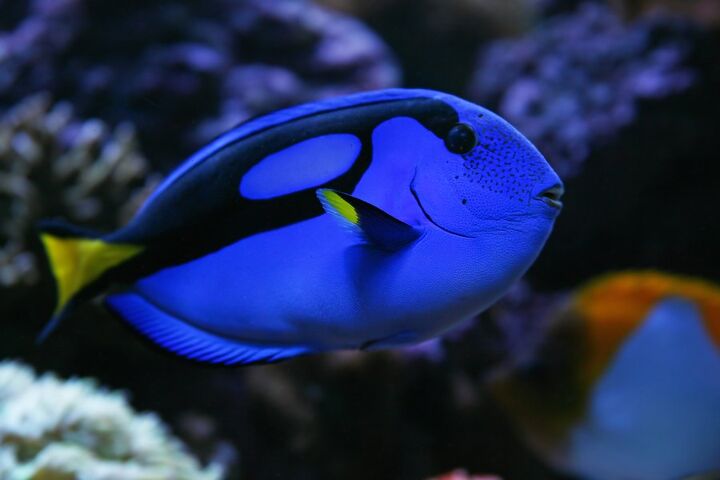Finding Dory: The True Tail Behind the Regal Tang Fish

It seems like every time a children movie comes out with animals as the main characters, they always become trendy pets. When Beverly Hills Chihuahua came out, everyone had to have a purse dog; when Finding Nemo came out, everyone needed “Nemo” and his fishy friends. The problem with this trend setting is that folks often make impulse buys without proper research on their must-have pet. And you know that with the summer release of “Finding Dory” (the sequel to Finding Nemo), the number one fish to have will be the Regal Tang. Anticipating another rush into salt water tanks for all of the fans, here is what you need to know before you buy.
Regal Tang Fish Basics
The adorable, forgetful Dory, voiced by Ellen DeGeneres, is known by several names: regal tang, royal tang, hippo tang, and blue tang. Tangs are members of the surgeonfish family named aptly for two spines they have near the base of their tail. They are found naturally around the Great Barrier Reef in Australia, as well as Indonesia and the Philippines. These bright fish are common among those who keep saltwater fish; however, tangs are considered fragile fish and shouldn’t be kept by someone just starting out in the hobby, or beginning their saltwater adventure.
Related: The Pros and Cons of CO2 in an Aquarium
Regal Tang Care Requirements
Regal Tang diets require a consistent source of spirinula to graze from in the tank, but they are omnivorous and need other sources of food as well. Full grown Regal Tangs will grow to about 12 inches nose to tail, and so require an aquarium no less than 180 gallons.
Tangs are also semi-aggressive fish that may not get along with others. Suitable tank mates include clown fish, saltwater angelfish, and cardinalfish. Bear in mind that the more fish living in the tank, the larger the aquarium should be. Male regal tangs are territorial and aggressive when living with other males of the same species.
Related: The Dish on Discus
Living conditions, aside from the large tank, should include adequate filtration and water movement provided by power heads and a protein skimmer. This fish enjoy a higher pH level of 8.0-8.4, and a specific gravity of 1.020-1.025. Regal tangs are egg layers, but have not been successfully bred in captivity.
As you can tell after reading the basic care of a regal tang, Dory is not a fish to be kept in every home. If your child shows an interest in having an aquarium after watching the movie, it may be best to start out small and work your way up the ladder of fish before diving in to the deep end of fish keeping. If it’s your first time, consider a freshwater tank before trying salt. But if you’ve got your heart set on salt, find a good fish store that can help guide you with knowledgeable information. In the long run, if you wait to find Dory, you’ll enjoy the hobby a lot more, as will your children.
Summer Davis is the mom of three kids, four dogs, and several tanks of fish. She boasts a passion for all animals, whether they are in the water or on land. This fish aficionado has kept many different species in her time, but holds a special place in her heart for wild and domestic bettas. When she’s not talking about fish, Summer “spins” her extra time as the director of a baton twirling organization.

Summer Davis is the mom of three kids, four dogs, and several tanks of fish. She boasts a passion for all animals, whether they are in the water or on land. This fish aficionado has kept many different species in her time, but holds a special place in her heart for wild and domestic bettas. When she's not talking about fish, Summer "spins" her extra time as the director of a baton twirling organization."
More by Summer Davis
























